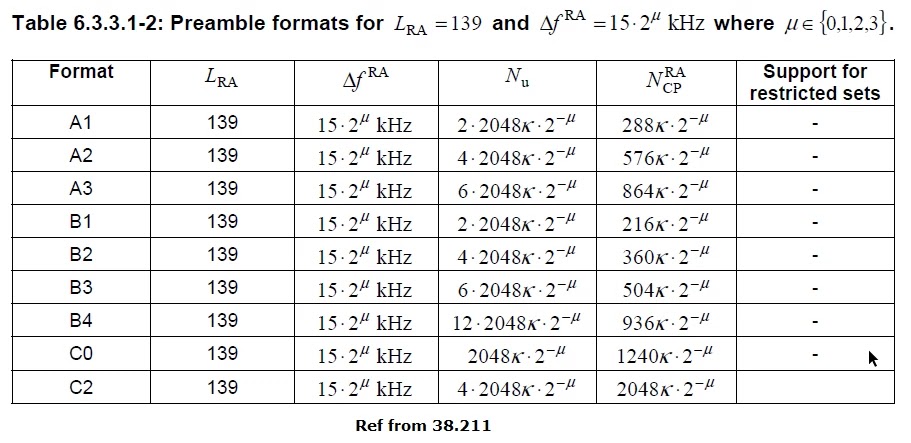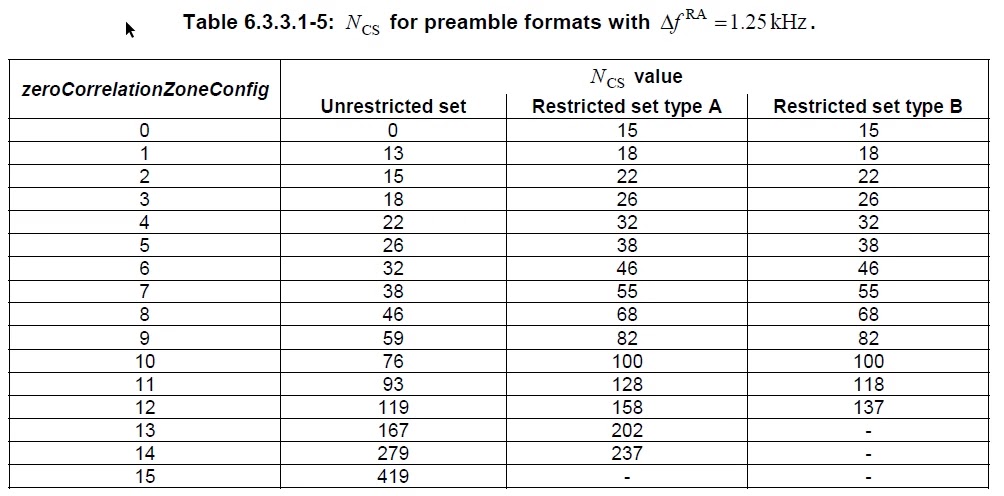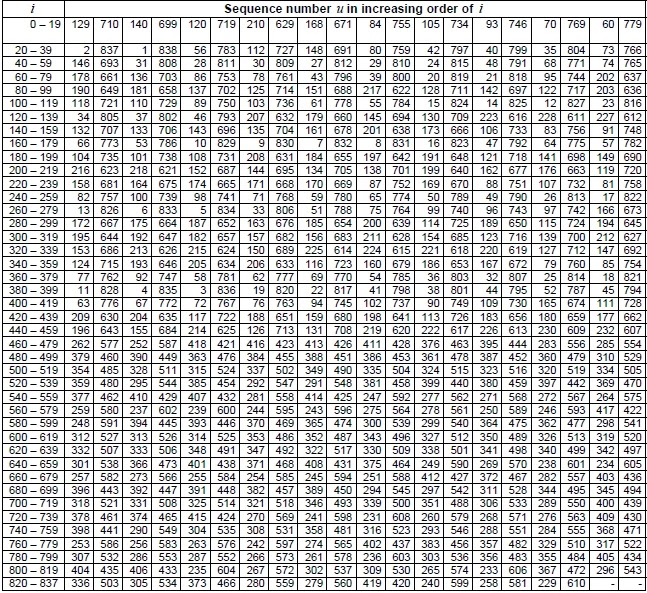5G Random Access Procedure:
·
Why Random Access
Procedure Require:
§
Used for UE UL Synchronization between UE to
Network
§
Require UL Resources for sending Msg3 or data
stored in buffer
§
UE Initial access from RRC_IDLE
§
Random Access Procedure is always initiated
by UE MAC Layer
§
RRC Connection and RRC Re-establishment
procedure
§
During Handover Time
§
During RRC_CONNECTED DL or UL data arrival
when UE have UL synchronization
§
Transition from RRC_Idle to RRC_Active State;
§
To establish time alignment at Secondary Cell
addition;
§
Request for Other System Information
·
How many Types of
Random Access Procedure:
Contention Based and Non-Contention Based
Random Access Procedure types are similar to LTE
procedure.

§
Non
Contention Based RAP: - Collisions will be avoided as Network
allocates special pattern and special PRACH Resources.
*UE MAC Randomly select a preamble from a 64 preambles
broadcast in PDCCH by network. How?
Preamble
Sequence Generation
In UE MAC Zadoff-chu sequence generation is used for
generate preamble and it have a property to convert actual no. into complex no.
(The complex no. having different angular values)
§
A long preamble with 1.25 kHz numerology
holds 6 resource blocks in the frequency domain, while a preamble with 5 kHz
numerology holds 24 resource blocks.
§
The Long preambles are based on a sequence
length is L = 839
§
Sub-carrier spacing can be 1.25
Khz or 5 Khz for long preamble
§
Numerology used for long preambles is
different from any other NR broadcast
§
Origin of long preambles partly from preamble
used for LTE
§
Long preambles can only be used for FR1
frequency bands that are less than 6000 Mhz (6 Ghz)
§
There are 4 different formats for long
preface names format # 0, format # 1, format # 2 and format # 3
§
NR preamble formats 0 and 1 are similar to LTE preamble formats 0 and 2
The above 64 preambles are using, have 4 formats and are
using in generally Numerology 0 which is similar with 4G. But in 5G we have 4
others Numerologies which are used for higher bands. So total 13 different
preambles formats are used in 5G.
The below table shown FR2 preamble formats:
Short Preamble Features:
§ The Short preambles are based on a sequence length L is
= 139
§ The sub-carrier spacing for the short-preamble is aligned
with the normal NR sub-carrier spacing i.e. 15 KHz, 30 KHz, 60 KHz
and 120 KHz.
§ Short preambles use subcarrier spacing of the following:
§ In case of operation below 6 GHz
(FR1) of 15 KHz or 30 KHz.
§ 60 Khz or 120 Khz in case of operation in high NR
frequency band (FR2).
§ A
short preamble holds 12 resource blocks in the frequency domain regardless of
numerology
§ Short preambles are generally shorter than longer
preambles and often feature only a few OFDM symbols.
§ Short preamble formats are designed such that the end of
each OFDM symbol acts as a CP for the next OFDM symbol and the length of the
preamble OFDM symbol is equal to the data of the OFDM symbol
§ In most cases it is therefore possible that multiple
preamble transmissions within the same RACH slot (opportunity) are collide in a
time. In other words, for short previews there may be multiple RACH
opportunities in a single RACH slot in the frequency domain as well as in the
time domain.
§ The 5G NR supports a mix of "A" and
"B" formats to enable additional formats such as A1 /
B1, A2 / B2, and A3 / B3.
§ The short Preamble formats are the same except for some
short cyclic prefixes for the A and B, B formats.
§ The preamble formats B2 and B3 are always used in
combination with the corresponding A formats (A2 and A3)
§ Micro-preambles are designed to target small / common
cell and indoor deployment scenarios.
§ Short preambles allow gNB receivers to use the same fast
Fourier transform (FFT) for data and random-access premature detection.
§ These preambles are composed of several small OFDM
symbols per second preamble, making them more robust against periodic channels
and frequency errors.
§
The short preambles supports analog
beam sweeping during PRACH reception, so that
the same preamble can be obtained with different beams at GBB
*Now
UE physical layer calculate RA_RNTI:
RA-RNTI= 1 + s_id + 14 × t_id + 14 × 80
× f_id + 14 × 80 × 8 × ul_carrier_id
Zero Correlation Zone:
Root
Sequence:
*RRC layer
configure the following parameters for RAP:
- prach-ConfigurationIndex: Provide the set of PRACH
occasions for the transmission of the Random Access Preamble
- preambleReceivedTargetPower: initial Random Access Preamble received power;
- preambleReceivedTargetPower: initial Random Access Preamble received power;
- rsrp-ThresholdSSB: This RSRP threshold is used
for the selection of the SSB and corresponding Random Access Preamble and PRACH
occasion. If the Random Access procedure is initiated for beam failure
recovery, rsrp-ThresholdSSB used for the selection of
the SSB within candidateBeamRSList refers to rsrp-ThresholdSSB in
BeamFailureRecoveryConfig IE;
- rsrp-ThresholdCSI-RS: This RSRP threshold is
used for the selection of CSI-RS and corresponding Random Access Preamble and
PRACH occasion. If the Random Access procedure is initiated for beam failure
recovery, rsrp-ThresholdCSI-RS shall be set to a value calculated by
multiplying rsrp-ThresholdSSB in BeamFailureRecoveryConfig IE by powerControlOffset
as specified in TS 38.214 [6];
- rsrp-ThresholdSSB-SUL: This RSRP threshold is
used for the selection between the NUL carrier and the SUL carrier;
- candidateBeamRSList: list of reference signals
(CSI-RS and/or SSB) is used to identifying the candidate beams for recovery and
the associated Random Access parameters;
- powerControlOffset: a power control offset present
between rsrp-ThresholdSSB and rsrp-ThresholdCSI-RS and it’s used
when the Random Access procedure is initiated for beam failure recovery.
- powerRampingStep: the power-ramping factor
is used to increase preamble transmit power.
- powerRampingStepHighPriority: in case of differentiated
Random Access procedure the power-ramping factor is used.
- scalingFactorBI: The scaling factor is used
for differentiated Random Access procedure;
- ra-PreambleIndex: nothing but Random Access
Preamble;
- ra-ssb-OccasionMaskIndex: defines PRACH occasion(s)
associated with an SSB in which the MAC entity may transmit a Random Access
Preamble (see spec 36.321 subclause 7.4).
- ra-OccasionList: It defines PRACH
occasion’s associated with a CSI-RS in which the MAC entity may transmit a
Random Access Preamble;
- ra-PreambleStartIndex: the starting index of
Random Access reamble(s) for on-demand SI request;
- preambleTransMax: used to count maximum
number of Random Access Preamble transmission.
The UE MAC entity handles the RAP procedure
in transport Channels called Random Access Channel
* When UE is configured with SCG (Secondary
Cell Group) than 2 MAC entities configured 1st for MCG (Master Cell
Group) and 2nd for SCG.
*The timers and parameters
are used in each MAC entities are configured independently else specified.
*The Serving Cells, CRNTI, Radio Bearers,
Logical CHannels, Upper and Lower layer entities, LCGs, and HARQ entities
considered by each MAC entity.
*If the MAC entity is configured with 1’s or
more SCells (Secondary Cells), there are multiple DL-SCH and there may be
multiple ULSCH as well as multiple RACH have per MAC entity.
* And 1’s DLSCH, 0’s or 1’s UL-SCH and 0’s or
1’s RACH for each Secondary Cell
*Or 1’s DL-SCH, 1’s UL-SCH, and 1’s RACH on
the Special Cell.
** If MAC entity is not configured with any
Secondary Cell, than there is 1’s DL-SCH, 1’s UL-SCH, and 1’s RACH per MAC
entity.





















Nice Post
ReplyDelete